Where the Crafts Babes and D.I.Y. Dudes Are
Click to embiggen. Again to magnify.

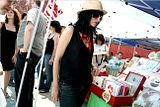
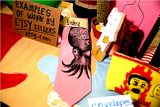
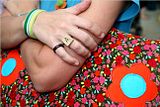





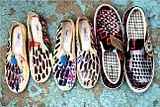


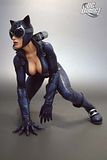

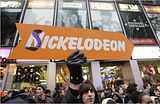
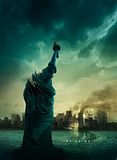




Where the Crafts Babes and D.I.Y. Dudes Are
By MELENA RYZIK
Published: June 24, 2007
FOR the past few years, facial hair has been all the rage in young bohemia. “I think mustaches in general are totally hilarious,” said Brendan Farley, 30. “Unfortunately, I look too hilarious in them.”
So last Saturday, Mr. Farley, a scenery carpenter from Astoria, Queens, did the next best thing: he spent $30 on a wooden mustache on a stick at a crafts fair in Brooklyn.
“This is a nice transitional piece,” Mr. Farley said, as he held the hand-carved curlicue up to his face and grinned. If he could have twirled his handlebar, he would have.
Among the many mysteries of the hipster life — Do they actually enjoy the taste of Pabst Blue Ribbon? How many graphic designers can the world need? — one of the most persistent is the much-copied (and parodied) aesthetic.
From ironic T-shirts and thrift-store dresses to ’80s jewelry and skinny ties, it can sometimes seem as if every young person who eschews investment banking and law school for creative pursuits looks eerily similar. Where do these trends come from? Who decided, for example, that a small star would be the must-have tattoo, or that the sparrow would become an icon?
Last weekend, an answer could be found in Brooklyn, in (of course) Williamsburg. The Renegade Craft Fair, the kind of alternative sale where cross-stitch is cool, was in town.
Last weekend, more than 200 vendors set up booths in McCarren Park Pool, peddling their handmade wares to people for whom do-it-yourself is the only label that matters. Begun in Chicago in 2003, the Renegade Craft Fair has swelled, attracting hundreds of far-flung vendors, thousands of shoppers and a few design tastemakers, who come as much for the scene as the marketplace. It may be the alt-design equivalent of the Venice Biennale.
“Renegade has the reputation of being the show to do — if you can get into it,” said Faythe Levine, a boutique owner in Milwaukee who is making “Handmade Nation,” a documentary about the makers of indie crafts. “It’s a destination.”
Originally the founders, Sue Blatt, 29, and Kathleen Habbley, 28, both of Chicago, just wanted a place to sell their handmade jewelry and purses. But when they began investigating the city’s crafts and art fairs, “we couldn’t find anything that fit our aesthetic,” Ms. Blatt said. “We did know there were Web sites out there doing the same types of D.I.Y. crafts that we were.”
So they set up an event in hip-magnet Wicker Park in September 2003, expecting a few dozen local hobbyists. Instead, they were inundated with interest from around the country.
Now there are two Renegade Fairs in Chicago annually. The event in Brooklyn began in 2005, and has been growing ever since. This year Ms. Blatt and Ms. Habbley received online applications from more than 400 vendors — up from 300 last year —and whittled it down by about half; sellers came from as far away as Los Angeles and Canada. Though they don’t keep hard attendance figures, the organizers estimate that 20,000 people stopped by last weekend to buy silk-screened T-shirts, enamel jewelry, patchwork handbags, funky baby clothes, dog pillows and small artworks.
Most items are less than $100; a D.J., frozen mojitos and the fair’s status as cute-girl central (“crafts babes,” one man panted) add to the appeal.
Gabi Valladares O. of Caracas, Venezuela, an art director for a television network, extended a business trip to New York so she could come to the fair.
“It’s great to see people doing something with their own hands,” she said, clutching an enormous so-ugly-it’s-lovable plush doll. She added that she was mining the prominent design themes — nature, psychedelia, adorability — for visual inspiration.
As the fair has grown, so has the community that sustains it. Etsy, the online marketplace for handmade goods — a crafty cross between Amazon and eBay — began in 2005.
Robert Kalin, 27, the founder, promoted it with fliers at the initial 2005 Renegade fair in Brooklyn. In May 2006, Etsy recorded sales of $170,000; in May 2007 its members sold $1.7 million. Etsy charges a listing fee of 20 cents and takes 3.5 percent of each sale. Now the site has more than 325,000 registered users, 50,000 of them sellers.
Last year Etsy turned its offices in Dumbo into a laboratory and storefront, open to the public for classes and events; Mr. Kalin hopes to replicate it nationwide. Ms. Blatt and Ms. Habbley, meanwhile, were just happy to quit their day jobs, waitress and animal shelter employee, respectively. Next month they will open their own boutique in Wicker Park, Renegade Handmade, selling some of their favorite goods from the fair.
But as the crafty aesthetic has become more popular and profitable, its devotees are confronted with problems of scale.
Ms. Levine, the documentary maker, started as a self-employed maker of plush toys. Her biggest seller was Messenger Owl (it has a pocket for notes). “I hate making them now,” she said. “I got overwhelmed with orders and couldn’t keep up with production.”
She said she knew of other designers who experienced the same thing after they found success, asking questions like: Is it O.K. to outsource? How do you hand-cut a thousand of something without getting carpal tunnel? She brought in friends; some designers enlist their mothers. Mr. Kalin hopes the communal model of the Etsy lab will be another solution.
Christine Haynes, 36, a clothing designer from Los Angeles, who has sold at the fairs since 2003, appreciates the attention. “The first year it was deliberately punk rock,” she said. “Now the D.I.Y. movement has made a real presence in the market. We’re a force to be reckoned with.”
Jen Anisef, 30, a fair veteran and crafts entrepreneur visiting from Toronto, agreed. “Everyone’s got professionally made business cards,” she said. “The marketing is a lot slicker.”
But, she added, the focus on selling may have minimized the creativity. “That’s been our complaint today,” she said. “A lot of the stuff is the same: antique chain necklaces, buttons, reconstructed stuff. Birds have got to go. Forest animals have had their day.”
Ms. Anisef’s husband, Mike Kennedy, 32, a woodworker, voiced another complaint: “There’s nothing for me to buy here,” he said. “I’d have a better chance if I were a baby. Or a dog.”
So while the sparrow and the owl — last year’s favored animal and the symbol of the fair — are out, the octopus, a burgeoning contender for creature of the moment, has been joined by other sea dwellers, like the squid. Judging by their prominence, hand-painted Vans are going to be big. And there are innovations, like Alyssa Ettinger’s ceramics made from sweater molds (the fabric’s weave is visible as a pattern), and Mr. Poncho, an iPod holder with an attached spindle to store earphones.
Roman Pietrs, 34, of Brooklyn, a graphic designer and musician, and his girlfriend, Sandy Hyun, 30, a jewelry designer, spent a month making 400 Mr. Ponchos. By the end of the fair, they had sold half of them, at $12 a piece.
Not everything is a hit: Mr. Pietrs’s Kevin Federline doll languished. And even the designers themselves tire of the relentless scenesterism.
“If I see any more cowboy boots,” said LeBrie Rich, 21, of Portland, Ore., who makes felt accessories, “I’m going to barf.”
But the mustaches on a stick? Sold out.
======
Comics
=======================================================
| Tags: books, comics, image comics, mike cavallero, parade (with fireworks)
| Tags: books, comics, scholastic, shaun tan, the arrival
| Tags: books, comics, first second books, laika, nick abadzis
| Tags: books, comics, m.f. grimm, music, percy carey, ronald wimberly, sentences, vertigo
| Tags: books, comics, jake myler, jim pascoe, manga, tokyopop, undertown
| Tags: 24seven, books, comics, frank beaton, image comics, ivan brandon
| Tags: books, comics, image comics, tom beland, true story swear to god
| Tags: black cherry, books, comics, doug tennapel, image comics
| Tags: adachitoka, alive, books, comics, del rey, manga, tadashi kawashima
| Tags: books, cathy malkasian, comics, fantagraphics, percy gloom
| Tags: amelia rules, comics, jimmy gownley
| Tags: books, comics, dc comics, derek kirk kim, good as lily, jesse hamm, minx
| Tags: books, comics, drawn and quarterly, james sturm, james sturm's america, the golem's mighty swing
| Tags: books, comics, fantagraphics, paul hornschemeier, the three paradoxes
| Tags: archaia studios press, comics, david petersen, mouse guard, mouse guard fall 1152
| Tags: comics, kevin mcshane, lobrau productions, toupydoops
| Tags: books, comics, drawn and quarterly, exit wounds, rutu modan
| Tags: aaron renier, ariel schrag, books, comics, stuck in the middle, viking
| Tags: books, comics, nick bertozzi, st. martin's press, the salon
| Tags: brandon graham, comics, king city, tokyopop
| Tags: books, comics, flight 4, kazu kibuishi, sarah mensinga
IDW Publishing continues to bring the stories of acclaimed science-fiction author Cory Doctorow to comics, this time offering up "Craphound." Despite the exoskeleton and mouth full of poisonous suckers, Jerry got along with the alien better than with most humans. In fact, Jerry had nicknamed him "Craphound", after their shared love of hunting for unique treasures at garage sales and thrift stores. They were buddies. That is, until Craphound found the old cowboy trunk.
“There’s more vomiting, nudity and defecation,” one executive said, speaking more candidly than the companies involved had agreed to and on condition of anonymity. “The stuff that consumers really want.”
============================================
Lawbreakers, Armed With Paint and Paste; Underground Artists Take to the Streets
By KIRK SEMPLE
Published: July 9, 2004
Swoon frontloads her days with caffeine and works on her art late into the night. It can take her two weeks to produce a series of the large, intricate paper cutouts and hand-pulled block prints that have gained her considerable renown in one particular sector of the art world. When she is done -- her arms aching and her clothes and skin speckled with paint and ink -- she takes her pieces outside, slaps them up on old walls around the city, then disappears on her bike.
That is when her work, now left to the mercy of the elements and public taste, comes alive. ''You know, it's weird, but I love it,'' she said. ''I don't feel they need to be kept in a vault as precious art.''
Swoon, 26, is a luminary in a movement known, at least among many of its proponents, as street art. Two decades after the heyday of graffiti, the spray can has given way to posters, stickers, stencils and construction tools, and the streets of New York and other cities around the world vibrate more than ever with the work -- some say the destruction -- of guerrilla artists like her. (Swoon is a nom de peinture; like many other artists interviewed for this article, she asked that her real name not be used for fear of prosecution because unauthorized graffiti is illegal.)
The movement is sustained and driven by Web sites, magazines, word of mouth and its practitioners' self-righteousness.
At one end of the spectrum are doodles, icons and designs, often drawn or printed on stickers, a medium that allows for pre-strike preparation at home and quick, furtive execution in public.
Others are using more complicated art techniques, such as the meticulous printing and paperwork preferred by Swoon, ceramics, lithography, silk screening, painting , leathersmithing and woodworking. Some have even used welding torches, notably the once-ubiquitous New York graffiti writer known as Revs, who has installed three-dimensional versions of his stylized name, or ''tag,'' around the city. Darius (also known by his graffiti tag, Verbs) and Downey, a Brooklyn tandem now living in London, turn old street signs into sculptures or small billboards for provocative messages and reinstall them, often in the plain light of day. ''We're using the city against itself,'' Downey, 23, said in a recent interview.
Any surface goes; the more visible and the less frequently buffed the better: walls, doors, the backs of stop signs, the base of light poles, utility boxes, trash bins, sidewalks, rooftops, the frames of subway car advertisements.
In New York, the streets of the Lower East Side and SoHo, Dumbo and Williamsburg are filled with fresh work. Even in the most closely policed neighborhoods, rare is the city block where some visual mischief has not been unleashed.
''Size is not what it's about,'' said Marc Schiller, 40, a New York marketing executive who, as a hobby, runs the Wooster Collective, a curatorial Web site for street art around the world. ''It's about being clever. It's about being unique.'' (One unknown artist has arrayed 18 luggage locks, each decorated with a baby's picture, on a fence on Crosby Street in SoHo. Periodically the artist will rearrange the locks to make a new design.)
And while much of the work seems to be art for art's sake -- or at least humor's sake -- street art occasionally resonates with overt social and political commentary. In one arresting series that recently appeared (and just as quickly disappeared) in Lower Manhattan, an artist replaced the silhouetted dancers in the current iPod advertisement with silhouettes of Abu Ghraib torture victims. The tag line ''10,000 songs in your pocket, Mac or PC'' became ''10,000 volts in your pocket, guilty or innocent.''
Like any artistic movement, the origins of street art are nebulous, though it is clearly an outgrowth of the stylized graffiti writing that began in New York in the 1960's and became emblematic of hip-hop culture. According to Tristan Manco, a graphic designer in Bristol, England, and author of the street art compendium ''Street Logos,'' the term ''street art'' was first used in the 1980's in reference to urban guerrilla art that was not hip-hop graffiti, and described the pioneering work of New York painters like Keith Haring and Kenny Scharf, and Parisian stencil artists like Blek and Nemo.
Street art has since spread around the world, from the East End of London to Tokyo, Moscow to Johannesburg, Melbourne, Australia, to São Paulo, Brazil. And in spite of the movement's underground nature, the work of today's most prominent street artists is increasingly sought by galleries and collectors around the world, though the pieces are not yet fetching the sums attached to the art of New York's graffiti pioneers. (Mr. Haring's chalk drawings on black subway-advertisement placeholders command thousands of dollars at auction.)
Ask street artists to talk about why they do what they do, and brace for a torrent of rationalization. Shepard Fairey, a 34-year-old artist who is famous for his global ''Obey Giant'' sticker campaign featuring the glowering mug of the late World Wrestling Federation star Andre the Giant, has even published a manifesto in which he calls his work ''an experiment in Phenomenology,'' the first aim of which, he says, ''is to reawaken a sense of wonder about one's environment.''
Artists and their supporters say they are simply responding to what they regard as a visual assault by corporations and commercial interests. ''Why is the ad I see in the Gap more acceptable than any art that I hang on a public lamppost?'' Mr. Schiller asks. ''Let's balance the scales a bit. We're talking about anybody having the right to express themselves.'' (If Mr. Schiller's message seems incongruous with his profession -- marketing -- he says he hopes his passion for street art has made him better at his job by making him more sensitive to the negative effects of advertising.)
But many street artists will admit to a less noble motivation: the urge to go out and break the law. The waft of fresh wheat paste, it seems, can inspire a night of vandalism. ''That's something that people really love about it: getting over on the man,'' said Kelly Burns, 38, the author of the book ''INY,'' a photographic exploration of New York street art.
The law does not make a distinction between a tag scratched on a sticker or Swoon's cutouts. It is all vandalism. (The New York Police Department turned down a request for an interview.)
Swoon, who has never been arrested, says she is ''fully in touch with the ambiguity'' of what she does -- by which she means the illegality. So she picks her spots carefully, exploring what she calls ''third spaces'' -- not really public, maybe private, undoubtedly neglected. Her backdrops include abandoned buildings, rundown warehouses, and broken walls. ''There are so many spaces that don't really need to be brown,'' she said.
Swoon first took her art to the street five years ago while she was a fine-arts student at Pratt Institute in Brooklyn. She was compelled to take her work outside after suffering what she calls ''the quiet, boring preciousness'' of the gallery world.
''I wanted to jump out of my skin,'' she said. But the streets were free and open to a wider range of expression. ''Because it's kind of an outlaw thing, you don't have to go through official channels,'' she explained. ''It's trying to create a visual commons out of the derelict walls of the city.'' (She has since returned to the gallery scene, as the star of her own shows in Berlin, Miami and Cincinnati. ''I need to make a living,'' she shrugged.)
On a recent afternoon, Swoon, a fit, enthusiastic woman with wavy, strawberry blond hair and a small silver nose ring, interrupted her work on her most recent project, which was a day or two away from completion, to give a brief bicycle tour of some of the pieces that have survived in Boerum Hill and Prospect Heights. Her recent and most famous work involves life-size cutouts and block prints of people with which, she says, she is ''populating the city.''
She stopped in front of the trash-strewn loading dock of an old warehouse on Bergen Street near Flatbush Avenue, across the street from a police station in Prospect Heights. A worn silhouette of a hooded, hunched man lurked on the wall. ''It's a good place for him to hang out,'' she said warmly. ''I want them to become part of their space, to interact in a human way. A sticker can't do that.''
Swoon avoids sentimentality and regards her distribution method as a game of evolutionary fate. ''I'm getting them out there and seeing which ones survive, like baby sea turtles,'' she explained. Even her preferred paper -- newsprint, a highly fragile material -- limits the life expectancy of her work. But she loves how the paper curls and rots, giving the art character and a voice where there might otherwise be silence.
===============================================================================================
THE WAY WE LIVE NOW: 10-03-04: CLOSE READING;
Painting the Town (Again)
By ROB WALKER
Published: October 3, 2004
Some say that the artists have been shut out of SoHo, but it isn't true. At least not in the view of Marc Schiller, who lives in the neighborhood and who, with his wife, Sara Beard, runs a Web site, woostercollective.com. The site is a showcase for ''street art,'' which some people think of as graffiti and other people think of as blight and many people do not really think about at all. The building above happens to be on the southern end of Wooster Street, but anyone who has lived for long in New York has walked past variations on this wall a hundred times. If the words and images sprayed, wheat-pasted or glued on the surfaces of the city are an institution of a sort, it's the sort that the hardened New Yorker hardly even notices anymore.
According to the book ''Subway Art,'' by Martha Cooper and Henry Chalfant, New York teenagers in the 1960's were the key players in modern graffiti history, scrawling their names on buildings like territorial markers. Scrawls evolved into baroque ''tags,'' some of which (Futura 2000, Revs) gained notoriety. Subway cars became a popular canvas, and so did the walls of SoHo, where Keith Haring and Jean-Michel Basquiat straddled the line between fine art and street art.
Graffiti never went away, but in the last two years or so, there has been a new wave, Schiller says, partly because of the Internet. Through sites like his, as well as stencilrevolution.com, ekosystem.org and stickernation.com, people working in a variety of media on public surfaces all over the world can see, and show, their work in a new way. A result is a global community, linking the form's biggest icons with the newest up-and-comers, from the Lower East Side to Latvia. ''Even if you're in a small town,'' Schiller says, ''you're connected.''
Even so, some surfaces count more than others. This site, referred to as the Candy Factory, is one of several street-art landmarks in the city. Such buildings are increasingly rare because owners are becoming more aggressive about ''buffing'' away marks and posters. That has turned spots like this one into ''outdoor galleries,'' as Schiller sees it -- places to see how street art has evolved to include not just spray-painted names and symbols but also elaborate mixed-media works, even sculpture. The Candy Factory, then, can be seen as an eyesore, but it is also an ever-changing group show. There is no catalog, but a brief guide to some of the work recently on display can be pieced together with help from the Web, from the recent photo books ''Street Logos'' and ''I NY'' and from Schiller. Around the corner is what appears to be a video-game character made of tile -- the work of the French street artist known as Space Invader. Buried under other images is an old piece by Akay from Sweden. Some of the more clearly visible pieces are explained on these pages and include images by street artists from New York, California, London, Amsterdam -- more proof that everyone wants to make a mark on New York City.
================================
'E PLURIBUS VENOM'
By BENJAMIN GENOCCHIO
Published: June 29, 2007
‘E PLURIBUS VENOM’ The paradox of well-heeled and wealthy art collectors fawning over rebellious street art is apparent everywhere in the art world. The graffiti artist known as Banksy is the toast of London, while Shepard Fairey is approaching cult status in Los Angeles for his posters and stickers of the face of the professional wrestler Andre the Giant with the word “obey” emblazoned across them. Mr. Fairey, 37, is now having his first major New York gallery exhibition, split between the Jonathan LeVine Gallery in Chelsea and a rented 6,600-square-foot warehouse exhibition space in Brooklyn for huge graffiti installations and murals. (Last week’s opening in Brooklyn was disrupted by a man trying to set off an incendiary device.) There are about 80 works between the two sites, together forming a comprehensive, 20-year survey of his artwork in various mediums: screen prints, stencils, stickers, album covers, collage, spray paint and more. Despite the range of mediums and styles, the imagery comes off as generic, combining decorative elements with political metaphors, like an image of a couple cuddling a bomb. (Right is “War for Sale.”) It’s Norman Rockwell crossed with the Dead Kennedys crossed with Communist-era propaganda. References to capitalism and war predominate, especially in the Chelsea show, where many works are neatly framed and ready for sale. It is tempting to see this stuff as just another luxury commodity. (Jonathan LeVine Gallery, 529 West 20th Street, ninth floor, 212-243-3822, jonathanlevinegallery.com, through July 21; 81 Front Street, at Washington Street, Dumbo, Brooklyn, through July 6.) BENJAMIN GENOCCHIO
================================================
I have been a professional caricature artist for over for over 28 years. I have experience in all types events.
Trade Shows
Corporate Events
Bar-Mitzvahs
Grand Openings
Parties
Weddings
You name the event, I’ve drawn at it!
My many years of experience are assurance that you are booking a Seasoned Professional.
Client service is as important as the artwork provided.
I spent the first 25 years in the theme park industry. Working for the largest provider of artistic retail concessions in the United States where I was a senior manager. I operated, consulted, hired and trained artist for Busch Gardens, Sea World, Six Flags, Cedar Fair and Paramount Parks across the US.
I can personalize, label, logo, or theme the sketch paper for an added touch.
Not only am I providing entertainment for your guest, but a gift as well!
Making your event a huge success is my #1 priority!
Let me make your event...a work of art !
========================================================================
Naughty Santa Reveals All
December 11, 2007, 6:58 pm
By Sewell Chan
We then asked our Santa a round of rapid-fire questions.
Were any Santas arrested? “Not that I know of.”
Were any Santas drunk? “I’m pretty sure.”
What’s the worst thing you saw happen? “I saw some people throw up.”
What’s the best thing you saw happen? “The spontaneous dance party in Tompkins Square Park was amazing.”
Any women among the Santas? “I would say a quarter to a third. The women tended more frequently to vary the costume; there were some you could call slutty elves and reindeer.”
What was the overall point? “I’m not sure what inspired the founders, but I thought it was a ton of fun. Almost everybody who encountered this unexpectedly got a kick out of it.”
How did children on the street respond? “At first confused, but it seemed to quickly turn into excitement.”
What kind of childhood Christmas causes someone to do this? “I am Jewish and I’ve never celebrated Christmas before. I have almost no Santa affinity, and I thought it would still be a ton of fun.” (Our Santa pointed out that among the Santa costumes was one person dressed as Jesus and another as Moses, and someone with a six-pointed reindeer’s horn — “with a condom on each horn.”)
Does SantaCon give people some weird thrill? Is it transgressive? “My friend who took me there is upstate, grew up Baptist and comes from a very observant Christian family. He was as excited about this as I’ve ever seen him about anything.”
The naughtiest part of the event? “There were a lot of people making out, couples. That’s not particularly naughty in New York City. But when it’s Santa and an elf, it’s a little eye-opening. By normal standards it was tame.”
The nicest? “The crowd was really cool toward kids. There was a lot of high-fiving with strangers and kids. A lot of tourists wanted pictures with Santa. I thought it was going to be more obnoxious and aggressive than it turned out to be.”
Mr. Tremaine said the “Jackass” creative team had retained ownership of Internet rights as part of a failed effort to exploit the dot-com boom a decade ago. He said he was more excited about jackassworld.com than the new movie, in part because it had allowed the team to go back to its origins as an outgrowth of the skateboarding magazine Big Brother, no longer published.
The creators of the “Jackass” franchise are using the new film to attract traffic to jackassworld.com, now under construction.
The production cost, executives said, is being recouped by a license-fee guarantee, in the low seven figures, that Blockbuster agreed to pay for a one-week exclusive.
On Dec. 26, the movie will be available on download-to-own retail sites like iTunes and Amazon.com, for $10 to $15, and a DVD — including 45 minutes of extras — will also go on sale, for $30.
Beginning Jan. 1, advertising-supported streaming sites like Joost will let viewers watch the movie, or selected bits, for free. And in February the movie will be offered through cable and satellite TV video-on-demand services. Paramount will keep 70 percent of online sales proceeds, executives said.
“We’re trying to assess here not only the potential for a broadband movie online, but also the different ways to distribute,” Mr. Lesinski said. “Within 30 days we’ll have a very good idea where the consumption is coming from.”
================================================================================================-
Comment of the Moment
“It's fascinating to note how desperate old media companies are to shave pennies off wherever they can.”
— CMNYCMTV Responds to Freelance Outcry
==================================================================================================




















Where the Crafts Babes and D.I.Y. Dudes Are
By MELENA RYZIK
Published: June 24, 2007
FOR the past few years, facial hair has been all the rage in young bohemia. “I think mustaches in general are totally hilarious,” said Brendan Farley, 30. “Unfortunately, I look too hilarious in them.”
So last Saturday, Mr. Farley, a scenery carpenter from Astoria, Queens, did the next best thing: he spent $30 on a wooden mustache on a stick at a crafts fair in Brooklyn.
“This is a nice transitional piece,” Mr. Farley said, as he held the hand-carved curlicue up to his face and grinned. If he could have twirled his handlebar, he would have.
Among the many mysteries of the hipster life — Do they actually enjoy the taste of Pabst Blue Ribbon? How many graphic designers can the world need? — one of the most persistent is the much-copied (and parodied) aesthetic.
From ironic T-shirts and thrift-store dresses to ’80s jewelry and skinny ties, it can sometimes seem as if every young person who eschews investment banking and law school for creative pursuits looks eerily similar. Where do these trends come from? Who decided, for example, that a small star would be the must-have tattoo, or that the sparrow would become an icon?
Last weekend, an answer could be found in Brooklyn, in (of course) Williamsburg. The Renegade Craft Fair, the kind of alternative sale where cross-stitch is cool, was in town.
Last weekend, more than 200 vendors set up booths in McCarren Park Pool, peddling their handmade wares to people for whom do-it-yourself is the only label that matters. Begun in Chicago in 2003, the Renegade Craft Fair has swelled, attracting hundreds of far-flung vendors, thousands of shoppers and a few design tastemakers, who come as much for the scene as the marketplace. It may be the alt-design equivalent of the Venice Biennale.
“Renegade has the reputation of being the show to do — if you can get into it,” said Faythe Levine, a boutique owner in Milwaukee who is making “Handmade Nation,” a documentary about the makers of indie crafts. “It’s a destination.”
Originally the founders, Sue Blatt, 29, and Kathleen Habbley, 28, both of Chicago, just wanted a place to sell their handmade jewelry and purses. But when they began investigating the city’s crafts and art fairs, “we couldn’t find anything that fit our aesthetic,” Ms. Blatt said. “We did know there were Web sites out there doing the same types of D.I.Y. crafts that we were.”
So they set up an event in hip-magnet Wicker Park in September 2003, expecting a few dozen local hobbyists. Instead, they were inundated with interest from around the country.
Now there are two Renegade Fairs in Chicago annually. The event in Brooklyn began in 2005, and has been growing ever since. This year Ms. Blatt and Ms. Habbley received online applications from more than 400 vendors — up from 300 last year —and whittled it down by about half; sellers came from as far away as Los Angeles and Canada. Though they don’t keep hard attendance figures, the organizers estimate that 20,000 people stopped by last weekend to buy silk-screened T-shirts, enamel jewelry, patchwork handbags, funky baby clothes, dog pillows and small artworks.
Most items are less than $100; a D.J., frozen mojitos and the fair’s status as cute-girl central (“crafts babes,” one man panted) add to the appeal.
Gabi Valladares O. of Caracas, Venezuela, an art director for a television network, extended a business trip to New York so she could come to the fair.
“It’s great to see people doing something with their own hands,” she said, clutching an enormous so-ugly-it’s-lovable plush doll. She added that she was mining the prominent design themes — nature, psychedelia, adorability — for visual inspiration.
As the fair has grown, so has the community that sustains it. Etsy, the online marketplace for handmade goods — a crafty cross between Amazon and eBay — began in 2005.
Robert Kalin, 27, the founder, promoted it with fliers at the initial 2005 Renegade fair in Brooklyn. In May 2006, Etsy recorded sales of $170,000; in May 2007 its members sold $1.7 million. Etsy charges a listing fee of 20 cents and takes 3.5 percent of each sale. Now the site has more than 325,000 registered users, 50,000 of them sellers.
Last year Etsy turned its offices in Dumbo into a laboratory and storefront, open to the public for classes and events; Mr. Kalin hopes to replicate it nationwide. Ms. Blatt and Ms. Habbley, meanwhile, were just happy to quit their day jobs, waitress and animal shelter employee, respectively. Next month they will open their own boutique in Wicker Park, Renegade Handmade, selling some of their favorite goods from the fair.
But as the crafty aesthetic has become more popular and profitable, its devotees are confronted with problems of scale.
Ms. Levine, the documentary maker, started as a self-employed maker of plush toys. Her biggest seller was Messenger Owl (it has a pocket for notes). “I hate making them now,” she said. “I got overwhelmed with orders and couldn’t keep up with production.”
She said she knew of other designers who experienced the same thing after they found success, asking questions like: Is it O.K. to outsource? How do you hand-cut a thousand of something without getting carpal tunnel? She brought in friends; some designers enlist their mothers. Mr. Kalin hopes the communal model of the Etsy lab will be another solution.
Christine Haynes, 36, a clothing designer from Los Angeles, who has sold at the fairs since 2003, appreciates the attention. “The first year it was deliberately punk rock,” she said. “Now the D.I.Y. movement has made a real presence in the market. We’re a force to be reckoned with.”
Jen Anisef, 30, a fair veteran and crafts entrepreneur visiting from Toronto, agreed. “Everyone’s got professionally made business cards,” she said. “The marketing is a lot slicker.”
But, she added, the focus on selling may have minimized the creativity. “That’s been our complaint today,” she said. “A lot of the stuff is the same: antique chain necklaces, buttons, reconstructed stuff. Birds have got to go. Forest animals have had their day.”
Ms. Anisef’s husband, Mike Kennedy, 32, a woodworker, voiced another complaint: “There’s nothing for me to buy here,” he said. “I’d have a better chance if I were a baby. Or a dog.”
So while the sparrow and the owl — last year’s favored animal and the symbol of the fair — are out, the octopus, a burgeoning contender for creature of the moment, has been joined by other sea dwellers, like the squid. Judging by their prominence, hand-painted Vans are going to be big. And there are innovations, like Alyssa Ettinger’s ceramics made from sweater molds (the fabric’s weave is visible as a pattern), and Mr. Poncho, an iPod holder with an attached spindle to store earphones.
Roman Pietrs, 34, of Brooklyn, a graphic designer and musician, and his girlfriend, Sandy Hyun, 30, a jewelry designer, spent a month making 400 Mr. Ponchos. By the end of the fair, they had sold half of them, at $12 a piece.
Not everything is a hit: Mr. Pietrs’s Kevin Federline doll languished. And even the designers themselves tire of the relentless scenesterism.
“If I see any more cowboy boots,” said LeBrie Rich, 21, of Portland, Ore., who makes felt accessories, “I’m going to barf.”
But the mustaches on a stick? Sold out.
======
Comics
=======================================================
| Tags: books, comics, image comics, mike cavallero, parade (with fireworks)
| Tags: books, comics, scholastic, shaun tan, the arrival
| Tags: books, comics, first second books, laika, nick abadzis
| Tags: books, comics, m.f. grimm, music, percy carey, ronald wimberly, sentences, vertigo
| Tags: books, comics, jake myler, jim pascoe, manga, tokyopop, undertown
| Tags: 24seven, books, comics, frank beaton, image comics, ivan brandon
| Tags: books, comics, image comics, tom beland, true story swear to god
| Tags: black cherry, books, comics, doug tennapel, image comics
| Tags: adachitoka, alive, books, comics, del rey, manga, tadashi kawashima
| Tags: books, cathy malkasian, comics, fantagraphics, percy gloom
| Tags: amelia rules, comics, jimmy gownley
| Tags: books, comics, dc comics, derek kirk kim, good as lily, jesse hamm, minx
| Tags: books, comics, drawn and quarterly, james sturm, james sturm's america, the golem's mighty swing
| Tags: books, comics, fantagraphics, paul hornschemeier, the three paradoxes
| Tags: archaia studios press, comics, david petersen, mouse guard, mouse guard fall 1152
| Tags: comics, kevin mcshane, lobrau productions, toupydoops
| Tags: books, comics, drawn and quarterly, exit wounds, rutu modan
| Tags: aaron renier, ariel schrag, books, comics, stuck in the middle, viking
| Tags: books, comics, nick bertozzi, st. martin's press, the salon
| Tags: brandon graham, comics, king city, tokyopop
| Tags: books, comics, flight 4, kazu kibuishi, sarah mensinga
IDW Publishing continues to bring the stories of acclaimed science-fiction author Cory Doctorow to comics, this time offering up "Craphound." Despite the exoskeleton and mouth full of poisonous suckers, Jerry got along with the alien better than with most humans. In fact, Jerry had nicknamed him "Craphound", after their shared love of hunting for unique treasures at garage sales and thrift stores. They were buddies. That is, until Craphound found the old cowboy trunk.
“There’s more vomiting, nudity and defecation,” one executive said, speaking more candidly than the companies involved had agreed to and on condition of anonymity. “The stuff that consumers really want.”
============================================
Lawbreakers, Armed With Paint and Paste; Underground Artists Take to the Streets
By KIRK SEMPLE
Published: July 9, 2004
Swoon frontloads her days with caffeine and works on her art late into the night. It can take her two weeks to produce a series of the large, intricate paper cutouts and hand-pulled block prints that have gained her considerable renown in one particular sector of the art world. When she is done -- her arms aching and her clothes and skin speckled with paint and ink -- she takes her pieces outside, slaps them up on old walls around the city, then disappears on her bike.
That is when her work, now left to the mercy of the elements and public taste, comes alive. ''You know, it's weird, but I love it,'' she said. ''I don't feel they need to be kept in a vault as precious art.''
Swoon, 26, is a luminary in a movement known, at least among many of its proponents, as street art. Two decades after the heyday of graffiti, the spray can has given way to posters, stickers, stencils and construction tools, and the streets of New York and other cities around the world vibrate more than ever with the work -- some say the destruction -- of guerrilla artists like her. (Swoon is a nom de peinture; like many other artists interviewed for this article, she asked that her real name not be used for fear of prosecution because unauthorized graffiti is illegal.)
The movement is sustained and driven by Web sites, magazines, word of mouth and its practitioners' self-righteousness.
At one end of the spectrum are doodles, icons and designs, often drawn or printed on stickers, a medium that allows for pre-strike preparation at home and quick, furtive execution in public.
Others are using more complicated art techniques, such as the meticulous printing and paperwork preferred by Swoon, ceramics, lithography, silk screening, painting , leathersmithing and woodworking. Some have even used welding torches, notably the once-ubiquitous New York graffiti writer known as Revs, who has installed three-dimensional versions of his stylized name, or ''tag,'' around the city. Darius (also known by his graffiti tag, Verbs) and Downey, a Brooklyn tandem now living in London, turn old street signs into sculptures or small billboards for provocative messages and reinstall them, often in the plain light of day. ''We're using the city against itself,'' Downey, 23, said in a recent interview.
Any surface goes; the more visible and the less frequently buffed the better: walls, doors, the backs of stop signs, the base of light poles, utility boxes, trash bins, sidewalks, rooftops, the frames of subway car advertisements.
In New York, the streets of the Lower East Side and SoHo, Dumbo and Williamsburg are filled with fresh work. Even in the most closely policed neighborhoods, rare is the city block where some visual mischief has not been unleashed.
''Size is not what it's about,'' said Marc Schiller, 40, a New York marketing executive who, as a hobby, runs the Wooster Collective, a curatorial Web site for street art around the world. ''It's about being clever. It's about being unique.'' (One unknown artist has arrayed 18 luggage locks, each decorated with a baby's picture, on a fence on Crosby Street in SoHo. Periodically the artist will rearrange the locks to make a new design.)
And while much of the work seems to be art for art's sake -- or at least humor's sake -- street art occasionally resonates with overt social and political commentary. In one arresting series that recently appeared (and just as quickly disappeared) in Lower Manhattan, an artist replaced the silhouetted dancers in the current iPod advertisement with silhouettes of Abu Ghraib torture victims. The tag line ''10,000 songs in your pocket, Mac or PC'' became ''10,000 volts in your pocket, guilty or innocent.''
Like any artistic movement, the origins of street art are nebulous, though it is clearly an outgrowth of the stylized graffiti writing that began in New York in the 1960's and became emblematic of hip-hop culture. According to Tristan Manco, a graphic designer in Bristol, England, and author of the street art compendium ''Street Logos,'' the term ''street art'' was first used in the 1980's in reference to urban guerrilla art that was not hip-hop graffiti, and described the pioneering work of New York painters like Keith Haring and Kenny Scharf, and Parisian stencil artists like Blek and Nemo.
Street art has since spread around the world, from the East End of London to Tokyo, Moscow to Johannesburg, Melbourne, Australia, to São Paulo, Brazil. And in spite of the movement's underground nature, the work of today's most prominent street artists is increasingly sought by galleries and collectors around the world, though the pieces are not yet fetching the sums attached to the art of New York's graffiti pioneers. (Mr. Haring's chalk drawings on black subway-advertisement placeholders command thousands of dollars at auction.)
Ask street artists to talk about why they do what they do, and brace for a torrent of rationalization. Shepard Fairey, a 34-year-old artist who is famous for his global ''Obey Giant'' sticker campaign featuring the glowering mug of the late World Wrestling Federation star Andre the Giant, has even published a manifesto in which he calls his work ''an experiment in Phenomenology,'' the first aim of which, he says, ''is to reawaken a sense of wonder about one's environment.''
Artists and their supporters say they are simply responding to what they regard as a visual assault by corporations and commercial interests. ''Why is the ad I see in the Gap more acceptable than any art that I hang on a public lamppost?'' Mr. Schiller asks. ''Let's balance the scales a bit. We're talking about anybody having the right to express themselves.'' (If Mr. Schiller's message seems incongruous with his profession -- marketing -- he says he hopes his passion for street art has made him better at his job by making him more sensitive to the negative effects of advertising.)
But many street artists will admit to a less noble motivation: the urge to go out and break the law. The waft of fresh wheat paste, it seems, can inspire a night of vandalism. ''That's something that people really love about it: getting over on the man,'' said Kelly Burns, 38, the author of the book ''INY,'' a photographic exploration of New York street art.
The law does not make a distinction between a tag scratched on a sticker or Swoon's cutouts. It is all vandalism. (The New York Police Department turned down a request for an interview.)
Swoon, who has never been arrested, says she is ''fully in touch with the ambiguity'' of what she does -- by which she means the illegality. So she picks her spots carefully, exploring what she calls ''third spaces'' -- not really public, maybe private, undoubtedly neglected. Her backdrops include abandoned buildings, rundown warehouses, and broken walls. ''There are so many spaces that don't really need to be brown,'' she said.
Swoon first took her art to the street five years ago while she was a fine-arts student at Pratt Institute in Brooklyn. She was compelled to take her work outside after suffering what she calls ''the quiet, boring preciousness'' of the gallery world.
''I wanted to jump out of my skin,'' she said. But the streets were free and open to a wider range of expression. ''Because it's kind of an outlaw thing, you don't have to go through official channels,'' she explained. ''It's trying to create a visual commons out of the derelict walls of the city.'' (She has since returned to the gallery scene, as the star of her own shows in Berlin, Miami and Cincinnati. ''I need to make a living,'' she shrugged.)
On a recent afternoon, Swoon, a fit, enthusiastic woman with wavy, strawberry blond hair and a small silver nose ring, interrupted her work on her most recent project, which was a day or two away from completion, to give a brief bicycle tour of some of the pieces that have survived in Boerum Hill and Prospect Heights. Her recent and most famous work involves life-size cutouts and block prints of people with which, she says, she is ''populating the city.''
She stopped in front of the trash-strewn loading dock of an old warehouse on Bergen Street near Flatbush Avenue, across the street from a police station in Prospect Heights. A worn silhouette of a hooded, hunched man lurked on the wall. ''It's a good place for him to hang out,'' she said warmly. ''I want them to become part of their space, to interact in a human way. A sticker can't do that.''
Swoon avoids sentimentality and regards her distribution method as a game of evolutionary fate. ''I'm getting them out there and seeing which ones survive, like baby sea turtles,'' she explained. Even her preferred paper -- newsprint, a highly fragile material -- limits the life expectancy of her work. But she loves how the paper curls and rots, giving the art character and a voice where there might otherwise be silence.
===============================================================================================
THE WAY WE LIVE NOW: 10-03-04: CLOSE READING;
Painting the Town (Again)
By ROB WALKER
Published: October 3, 2004
Some say that the artists have been shut out of SoHo, but it isn't true. At least not in the view of Marc Schiller, who lives in the neighborhood and who, with his wife, Sara Beard, runs a Web site, woostercollective.com. The site is a showcase for ''street art,'' which some people think of as graffiti and other people think of as blight and many people do not really think about at all. The building above happens to be on the southern end of Wooster Street, but anyone who has lived for long in New York has walked past variations on this wall a hundred times. If the words and images sprayed, wheat-pasted or glued on the surfaces of the city are an institution of a sort, it's the sort that the hardened New Yorker hardly even notices anymore.
According to the book ''Subway Art,'' by Martha Cooper and Henry Chalfant, New York teenagers in the 1960's were the key players in modern graffiti history, scrawling their names on buildings like territorial markers. Scrawls evolved into baroque ''tags,'' some of which (Futura 2000, Revs) gained notoriety. Subway cars became a popular canvas, and so did the walls of SoHo, where Keith Haring and Jean-Michel Basquiat straddled the line between fine art and street art.
Graffiti never went away, but in the last two years or so, there has been a new wave, Schiller says, partly because of the Internet. Through sites like his, as well as stencilrevolution.com, ekosystem.org and stickernation.com, people working in a variety of media on public surfaces all over the world can see, and show, their work in a new way. A result is a global community, linking the form's biggest icons with the newest up-and-comers, from the Lower East Side to Latvia. ''Even if you're in a small town,'' Schiller says, ''you're connected.''
Even so, some surfaces count more than others. This site, referred to as the Candy Factory, is one of several street-art landmarks in the city. Such buildings are increasingly rare because owners are becoming more aggressive about ''buffing'' away marks and posters. That has turned spots like this one into ''outdoor galleries,'' as Schiller sees it -- places to see how street art has evolved to include not just spray-painted names and symbols but also elaborate mixed-media works, even sculpture. The Candy Factory, then, can be seen as an eyesore, but it is also an ever-changing group show. There is no catalog, but a brief guide to some of the work recently on display can be pieced together with help from the Web, from the recent photo books ''Street Logos'' and ''I NY'' and from Schiller. Around the corner is what appears to be a video-game character made of tile -- the work of the French street artist known as Space Invader. Buried under other images is an old piece by Akay from Sweden. Some of the more clearly visible pieces are explained on these pages and include images by street artists from New York, California, London, Amsterdam -- more proof that everyone wants to make a mark on New York City.
================================
'E PLURIBUS VENOM'
By BENJAMIN GENOCCHIO
Published: June 29, 2007
‘E PLURIBUS VENOM’ The paradox of well-heeled and wealthy art collectors fawning over rebellious street art is apparent everywhere in the art world. The graffiti artist known as Banksy is the toast of London, while Shepard Fairey is approaching cult status in Los Angeles for his posters and stickers of the face of the professional wrestler Andre the Giant with the word “obey” emblazoned across them. Mr. Fairey, 37, is now having his first major New York gallery exhibition, split between the Jonathan LeVine Gallery in Chelsea and a rented 6,600-square-foot warehouse exhibition space in Brooklyn for huge graffiti installations and murals. (Last week’s opening in Brooklyn was disrupted by a man trying to set off an incendiary device.) There are about 80 works between the two sites, together forming a comprehensive, 20-year survey of his artwork in various mediums: screen prints, stencils, stickers, album covers, collage, spray paint and more. Despite the range of mediums and styles, the imagery comes off as generic, combining decorative elements with political metaphors, like an image of a couple cuddling a bomb. (Right is “War for Sale.”) It’s Norman Rockwell crossed with the Dead Kennedys crossed with Communist-era propaganda. References to capitalism and war predominate, especially in the Chelsea show, where many works are neatly framed and ready for sale. It is tempting to see this stuff as just another luxury commodity. (Jonathan LeVine Gallery, 529 West 20th Street, ninth floor, 212-243-3822, jonathanlevinegallery.com, through July 21; 81 Front Street, at Washington Street, Dumbo, Brooklyn, through July 6.) BENJAMIN GENOCCHIO
================================================
I have been a professional caricature artist for over for over 28 years. I have experience in all types events.
Trade Shows
Corporate Events
Bar-Mitzvahs
Grand Openings
Parties
Weddings
You name the event, I’ve drawn at it!
My many years of experience are assurance that you are booking a Seasoned Professional.
Client service is as important as the artwork provided.
I spent the first 25 years in the theme park industry. Working for the largest provider of artistic retail concessions in the United States where I was a senior manager. I operated, consulted, hired and trained artist for Busch Gardens, Sea World, Six Flags, Cedar Fair and Paramount Parks across the US.
I can personalize, label, logo, or theme the sketch paper for an added touch.
Not only am I providing entertainment for your guest, but a gift as well!
Making your event a huge success is my #1 priority!
Let me make your event...a work of art !
========================================================================
Naughty Santa Reveals All
December 11, 2007, 6:58 pm
By Sewell Chan
We then asked our Santa a round of rapid-fire questions.
Were any Santas arrested? “Not that I know of.”
Were any Santas drunk? “I’m pretty sure.”
What’s the worst thing you saw happen? “I saw some people throw up.”
What’s the best thing you saw happen? “The spontaneous dance party in Tompkins Square Park was amazing.”
Any women among the Santas? “I would say a quarter to a third. The women tended more frequently to vary the costume; there were some you could call slutty elves and reindeer.”
What was the overall point? “I’m not sure what inspired the founders, but I thought it was a ton of fun. Almost everybody who encountered this unexpectedly got a kick out of it.”
How did children on the street respond? “At first confused, but it seemed to quickly turn into excitement.”
What kind of childhood Christmas causes someone to do this? “I am Jewish and I’ve never celebrated Christmas before. I have almost no Santa affinity, and I thought it would still be a ton of fun.” (Our Santa pointed out that among the Santa costumes was one person dressed as Jesus and another as Moses, and someone with a six-pointed reindeer’s horn — “with a condom on each horn.”)
Does SantaCon give people some weird thrill? Is it transgressive? “My friend who took me there is upstate, grew up Baptist and comes from a very observant Christian family. He was as excited about this as I’ve ever seen him about anything.”
The naughtiest part of the event? “There were a lot of people making out, couples. That’s not particularly naughty in New York City. But when it’s Santa and an elf, it’s a little eye-opening. By normal standards it was tame.”
The nicest? “The crowd was really cool toward kids. There was a lot of high-fiving with strangers and kids. A lot of tourists wanted pictures with Santa. I thought it was going to be more obnoxious and aggressive than it turned out to be.”
Mr. Tremaine said the “Jackass” creative team had retained ownership of Internet rights as part of a failed effort to exploit the dot-com boom a decade ago. He said he was more excited about jackassworld.com than the new movie, in part because it had allowed the team to go back to its origins as an outgrowth of the skateboarding magazine Big Brother, no longer published.
The creators of the “Jackass” franchise are using the new film to attract traffic to jackassworld.com, now under construction.
The production cost, executives said, is being recouped by a license-fee guarantee, in the low seven figures, that Blockbuster agreed to pay for a one-week exclusive.
On Dec. 26, the movie will be available on download-to-own retail sites like iTunes and Amazon.com, for $10 to $15, and a DVD — including 45 minutes of extras — will also go on sale, for $30.
Beginning Jan. 1, advertising-supported streaming sites like Joost will let viewers watch the movie, or selected bits, for free. And in February the movie will be offered through cable and satellite TV video-on-demand services. Paramount will keep 70 percent of online sales proceeds, executives said.
“We’re trying to assess here not only the potential for a broadband movie online, but also the different ways to distribute,” Mr. Lesinski said. “Within 30 days we’ll have a very good idea where the consumption is coming from.”
================================================================================================-
Comment of the Moment
“It's fascinating to note how desperate old media companies are to shave pennies off wherever they can.”
— CMNYCMTV Responds to Freelance Outcry
==================================================================================================


0 Comments:
Post a Comment
<< Home